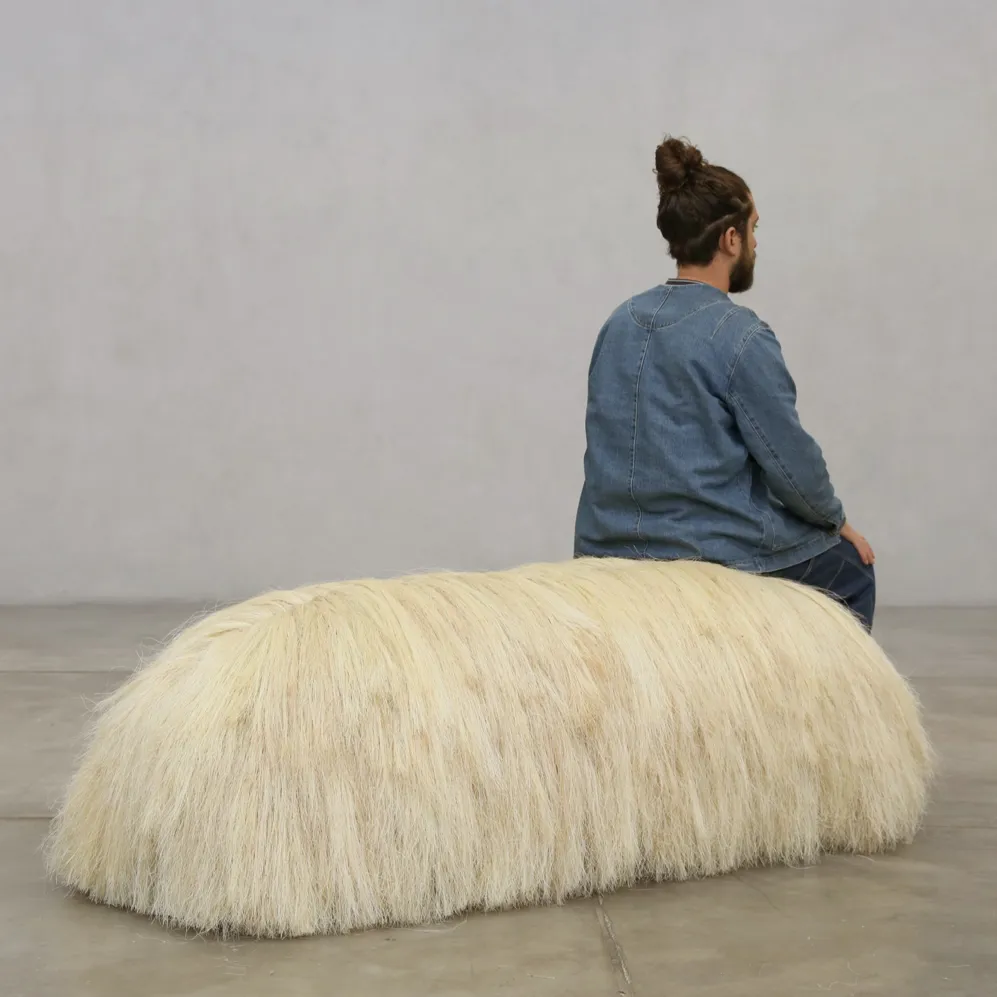
Words Vidula KotianDate 28 April 2021

The Central Martins-trained product designer’s creations go beyond a table or a lamp to art, gastronomy, science, politics, geography, history, economics, alchemy, and activism.
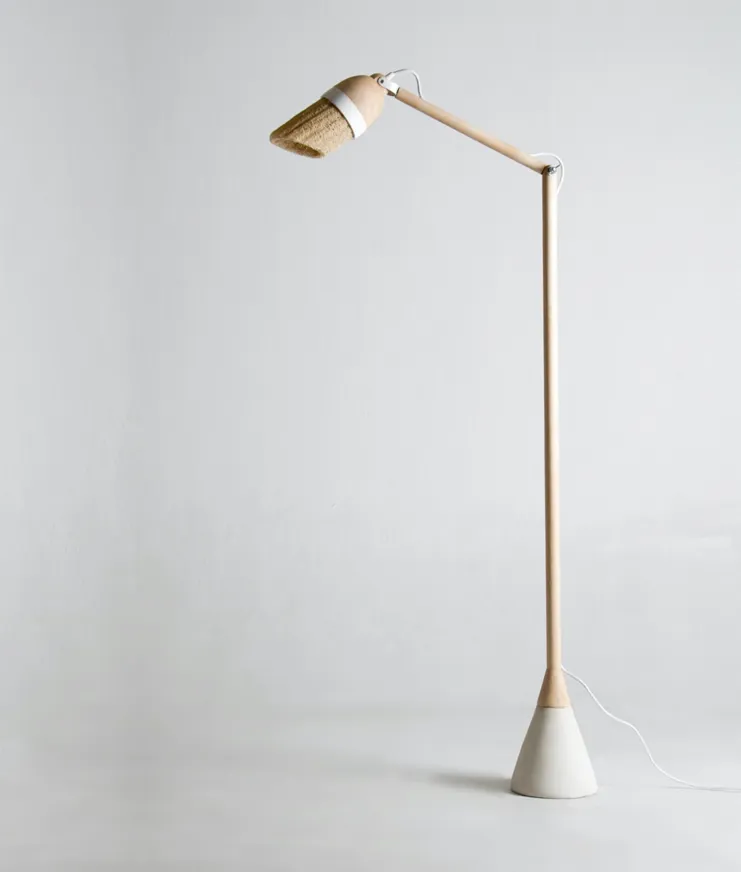
Lamp from the Lufa series
Exploring the uses of loofah beyond the bathroom
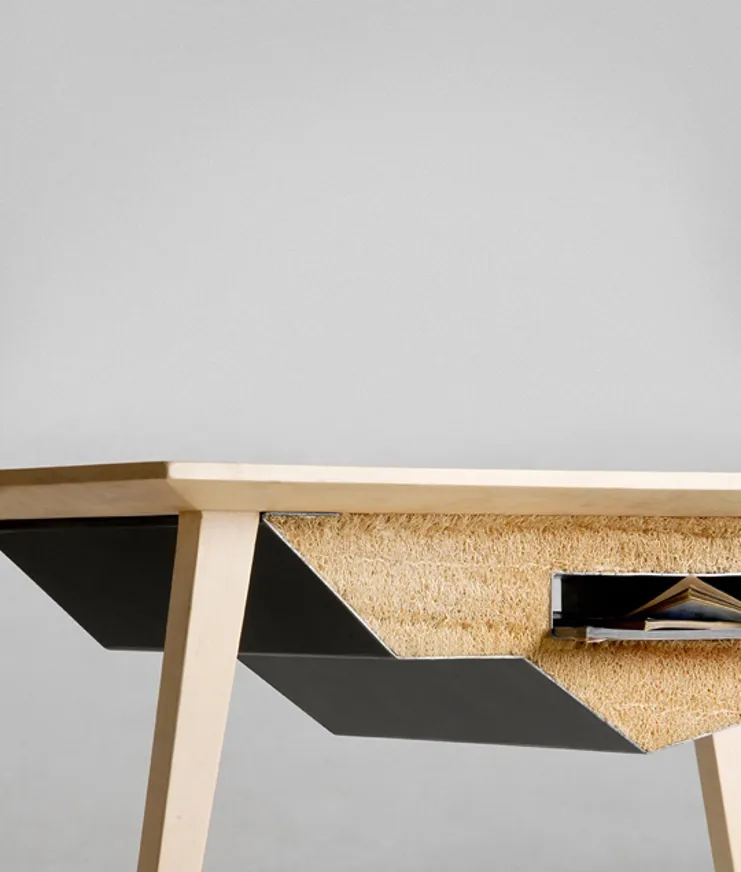
Desk from the Lufa series
His works are the result of periods of research that are developed into objects where materials and their historical and cultural ties to a particular location and its people take center stage.
Laposse works with indigenous communities in his native Mexico to create local employment opportunities and address topics such as the environmental crisis, the loss of biodiversity, community dissolution, migration, and the negative impacts of global trade in local agriculture and food culture through his projects.
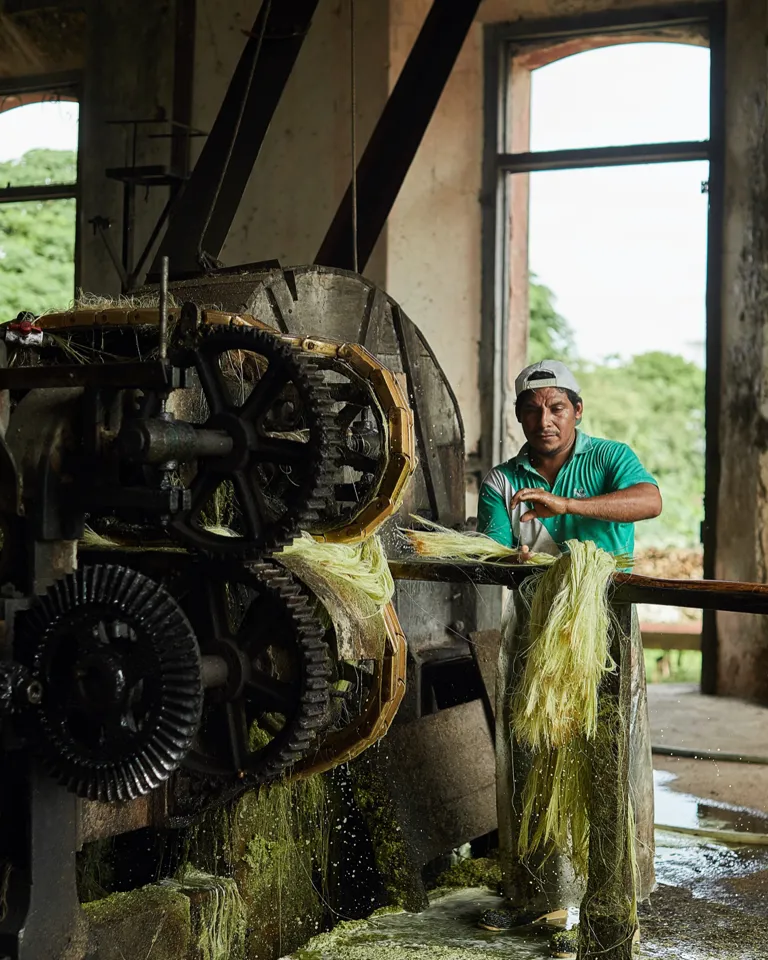
Empowering communities through new crafts

For Miami Art Week 2019, he transformed the Miami Design District with a collection of pink hairy sloths made from agave fibers and dyed using cochineal, a tiny insect that is native to Central America. Handmade by a community of Mayan weavers in Yucatán, the pink beasts hung from ropes, trees, and arches.
Plant fibers such as sisal, loofah, and corn leaves.
The first product he created was glass that you could eat! It was actually sugar.

Pink Beast public installation during Miami Art Week 2019
The making of the beasts
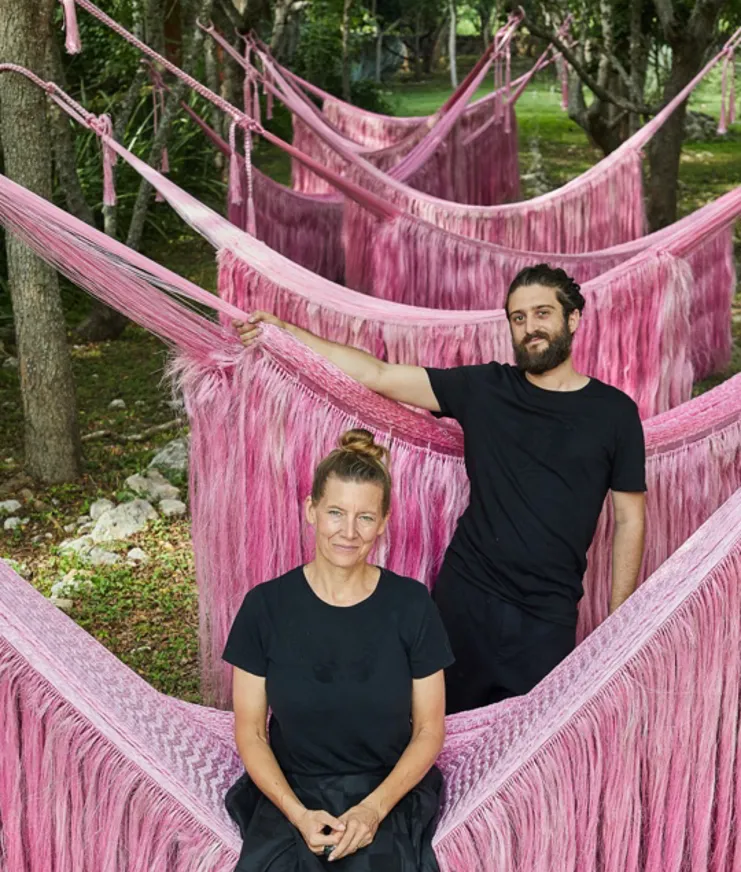
The pieces were colored pink using a natural dye called cochineal
My job is my hobby too so most of the time it doesn't feel like work. One of the things I like the most about it is making things with my hands and that my work allows me to interact with people from diverse backgrounds such as wealthy clients and gallerists in Paris or London to indigenous farmers in Mexico.
For me, the job of a designer is to add perceived value. We essentially trade in desire and we create that desire by making beautiful objects with stories. I started working with humble materials and waste because it is more challenging. If you start to design something with materials that are already luxurious like marble or brass the job is half done. I believe that taking on the challenge of using materials without an apparent value and turning them into desirable items is the best way to showcase that power of design to enchant people and get them to listen to your story.

I used sisal, which is a fiber extracted from the leaves of the agave plant. They were colored purple using cochineal, a natural dye made with crushed insects that grow in a cactus. Agave is one of the most important plants in our country, not only because it is very emblematic of our landscape, but because it produces our national spirits—tequila and mezcal which were until recently small batch, family-owned operations.
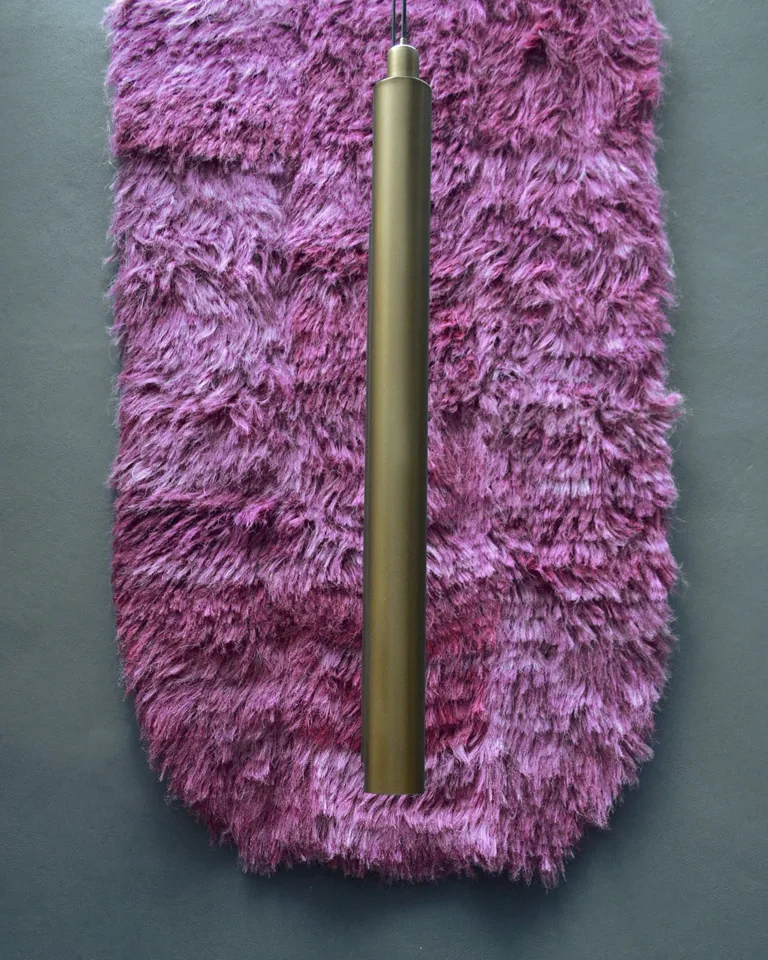
Reimagining waste from Mezcal production

Stunning wall hanging
In recent years, both tequila and mezcal production has skyrocketed and agave is now planted on an industrial scale. Unfortunately, these big producers are only after the core of the plant and throw the leaves away. For the last three years or so, I have been collecting the waste (agave leaves) of the mezcal industry in Oaxaca and using the fibers to make hairy sculptures, textiles, and tapestries. These have been featured in places like the Miami Design District during Art Basel. With this work, I wish to show that with a bit of creativity and curiosity we can turn “waste” into high art.
Sisal is the raw fibers made from the agave plant
The making of the dogs
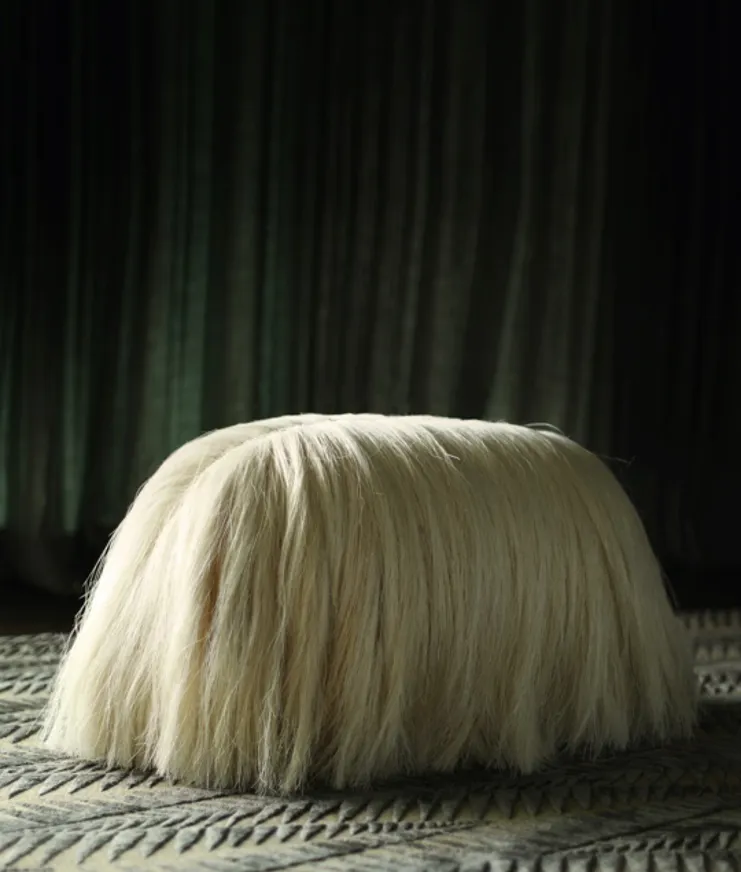
Dog sisal bench
I mainly work with only one community and the connection comes from a personal relationship. When I was young my father hired Delfino and Maria, a lovely couple that ended up working with my family for 20 years. They invited us to their village when I was six years old and I returned every summer for at least a decade, making very meaningful relationships there. I returned to the village in 2015 after many years and by then, Delfino had retired from his city job and relocated there. To my surprise, everything had changed. The village was deserted. Most people I had known as a kid had migrated to the U.S., their land was eroded, and they had lost their ancestral seeds of maize.
The main culprit was a slew of government programs that made them abandon their traditional methods and encouraged them to plant genetically modified corn and use chemicals to grow them. The result was devastating, both for the land and the community. They had broken that delicate natural balance that they had understood so well for thousands of years. It was a very sad moment but also a defining one. Delfino and I decided to act together: he organised a group of locals to start reforesting and repair the damages to their land and I developed a new material called Totomoxtle—a marquetry made with colorful maize husks that can be used for furniture and wall panels.
The project won a few awards and orders and commissions started coming in. That was six years ago and as of today, we have reintroduced six endangered species of ancestral maize. We employ about 20 people in our community workshop and have planted about 20,000 trees and desert plants to stop erosion. I don't choose communities that already have a craft but instead I like to work with farmers and create radically new techniques to empower them, create jobs locally, and to empower a new generation of craftspeople with a vision of respect towards nature.
I'm not sure this is a discovery, more of an anecdote. Last fall we had an invasion of grasshoppers in one of our corn fields, thousands of them just devouring everything. I thought we were going to lose our harvest but Delfino and his pals were very excited about it. We went to the field at 5am, at that time the grasshoppers were cold and they couldn't move so we started to pick them up one by one. By 8am, the sun was up and the few remaining started to hop so we couldn't catch them anymore but we had whole bags full of them. No pesticides were needed; we basically cleared the field.
The grasshoppers were cooked with chillies, garlic, lemon juice, and cilantro. They were absolutely delicious. For me, this was a cultural peculiarity in the sense that they took a situation that most people with a western mentality would have taken as a calamity and turned it into an opportunity—a culinary celebration of the bounties of nature that can only come with a deep understanding of the workings of our natural world. I think we are very fortunate in Mexico to still have a large number of people that have preserved this traditional knowledge. We have lots to learn from them and a lot of making up to right so many wrongs of our unjust colonial past.

I feel like I am already living the dream! I just wish I can keep this going, keep growing it. For me, my current projects are life-long.
I stopped flying and planted a lot of plants—a lot.
Less of it but more meaningful and more conscious on the part of the traveler and more tailored to the client on the side of the hotel. I see a big comeback for disruptive small luxury hotels offering bespoke experiences.
Pink beasts images courtesy Pepe Molina